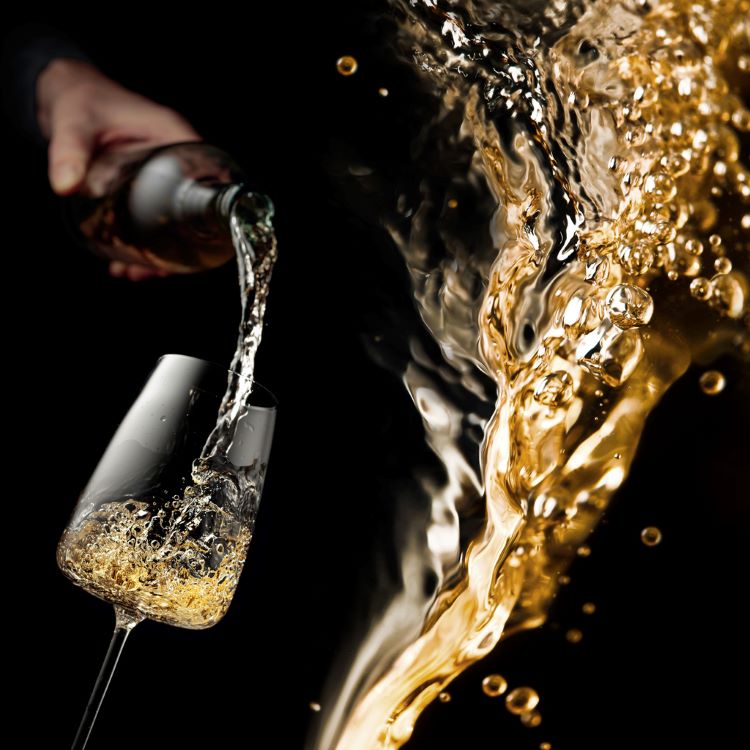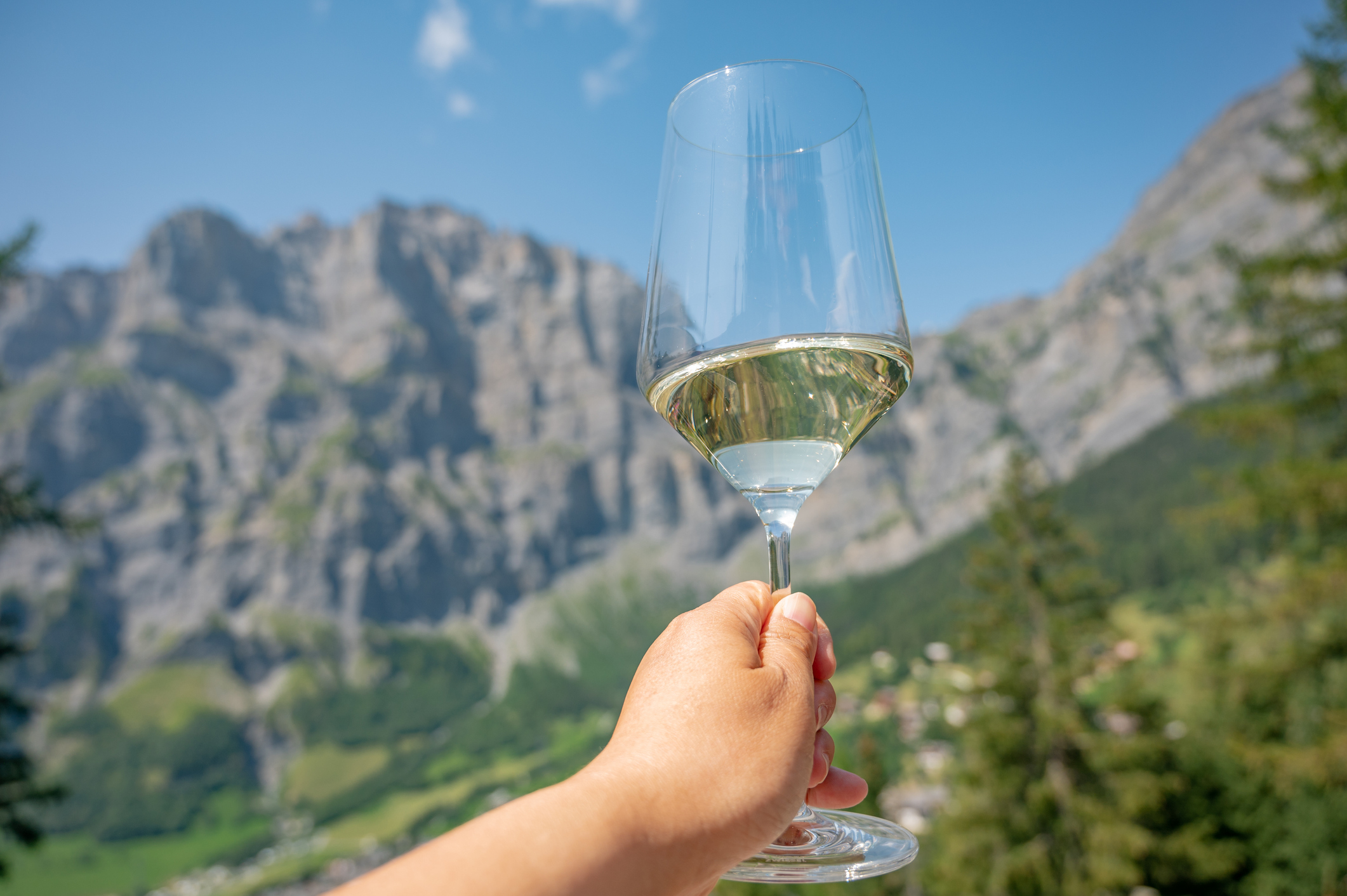To some, there are just two kinds of wine: white and red. To others, wine is an endless combination of locations, varietals, and vintages. No matter which camp you fall into, it’s hard not to notice all the high-tech accessories for drinking wine. Automatic corkscrews, wine aerators, wine spouts, wine preservation devices, wine thermometers, wine tables, and chairs. The list goes on and on.
But, with all these gizmos claiming to transform your wine into the sublime, it’s easy to overlook the only scientifically proven technology to elevate any wine’s smell, texture, flavor, and taste – The Wine Glass.
IN THIS GUIDE:
- The Anatomy of a Wine Glass
- Glasses for Light-Bodied White Wines
- Glasses for Full-Bodied White Wines
- …and more
Unless you prefer drinking from the bottle, the next thing you do after opening your favorite wine is to pour it into a glass, and chances are the glass was made especially for the “color” of the wine you’re about to drink. So, in this article, we’re taking a closer look at wine glassware, explicitly focusing on the top white wine glassware and why it’s worth paying attention to.
After pouring yourself that glass of “white,” have you ever looked at the wine and noticed it wasn’t white at all? Perhaps it appears slightly green, gray, yellow, gold, amber, or even brown? Well, when you’re in the Wine-O-Verse, all those colors are “white.” The reason why is a long story dating back arguably to ancient Egypt. For our purposes, it started in the 1980s when many white, red, and sparkling wine glass shapes and styles hit the market, ranging from simple and inexpensive to elaborate and outrageous. All of this culminated when glassware manufacturer Riedel introduced the concept that specific forms and styles of glassware complemented and enhanced types of wine styles and grape varietals. Something akin to the phrase “The Right Tool for the Right Job.”
But, before we get ahead of ourselves, let’s first understand why a wine glass is different from other glasses. At a basic level, all wine glasses, whether they focus on white, red, or sparkling break down into four core elements: the rim or opening, bowl, stem, and foot. The variations in these elements’ shape, size, width, and height create the distinction between types of wine glasses.
The Anatomy of a Wine Glass and How it Works
The Rim or Opening: This is the uppermost part of the bowl where you drink the wine. The rim’s size, shape, and width determine how the wine flows onto your palate, while the tapered opening narrower than the bowl traps aromas in the glass.
The Bowl: The most important part of the wine glass is the bowl. Not only does it hold the wine, but its shape and aspect ratio help define the wine. The bowl’s curved inward shape at the top enhances the wine’s aroma. It impacts how the wine tastes and conveys how it is distributed onto the palate. When you swirl, sniff and sip, the aromas become more distinct based on the concentration of the wine around the rim. Ultimately, we perceive the wine based on the shape of the bowl.
The Stem: Gives the glass its height, provides something to hold while drinking and connects the bowl to the foot. By holding the glass by its stem, the wine will maintain its temperature for longer than if held by the bowl (yes, your hands are hot). This is often an overlooked aspect when individuals are out drinking.
Winetraveler Tip: Next time you’re at a tasting or party, take a look around the room and see who’s holding their glass by the stem or the bowl. It might provide an icebreaker for starting a conversation, or at the very least you’ll change someone’s life for the better by offering them a more optimal drinking experience.
The Foot: Ensures the stemware is stable. Essential for the wine glass to stand.

How the Design of a Wine Glass Affects a Wine
Accordingly, a well-made wine glass has proven to accentuate several aspects of a wine’s quality:
Firstly, the bouquet, which is the quality and intensity of the wine’s aroma.
The texture or mouthfeel, the sensation of whether the wine is watery, creamy, silky, velvety, etc.
The taste, how the wine integrates with its fruit, minerality, acidity and bitter components.
The flavor, the combination of all of the above, creates the wine’s pleasant, seamless, harmonious, and long-lasting aftertaste.
All these twists and turns reveal that one glass isn’t ideal for all styles of white wine. Since grape varietals differ in flavor profiles, selecting the appropriate glass is essential. So for our purposes, we’re highlighting the two primary types of white wine glassware: those for high acid white wines and those for full-bodied white wines.
The main difference is, you guessed it, the shape of the bowl. Glasses for high acid white, light-bodied, or sweet whites are the smaller of the two. Their narrow bowls allow the wine to move onto the palate’s middle, bringing out its acidic qualities. In addition, these wines usually have lower alcohol. Wines like Dry Riesling, Sauvignon Blanc, and Rosé are examples for this glass style.
Glasses for oaked, creamy, or full-bodied whites have larger and broader bowls allowing the alcohol vapors to flow past the nose while accentuating the richer qualities of full-bodied whites like Chardonnay and Viognier.
Now that you have just enough knowledge to be dangerous and know what to look for. Let’s look at the top white wine glassware brands and styles.
Top Wine Glasses for Lighter-Bodied High-Acid White Wines
SCHOTT ZWIESEL is an innovator in the production of specialty glass and uses titanium to produce its crystal glassware known for its elegant designs and hard as nails strength.
Tritan Crystal Glass Forte Stemware Collection Style: This sturdy dishwasher-safe glass holds 9.4 ounces and is 8 inches tall and 2.9 inches wide. It’s a workhorse for everyday whites but also works well with spritzers and sparkling wine.
ZOLTA Denk’Art glassware is coveted by winemakers and wine aficionados, finely tuned, balanced and stunning. This glass enjoys cult status and is considered the gold standard. Beware, once you drink from Zolta glassware, you’ll have to have it.
Zolta’s White Wine Glass: Made by hand using mouth-blown crystal, this glass holds 13.5 ounces and is 9 inches tall and 3.2 inches wide. Delicate yet dishwasher safe.
Top White Wine Glassware for Full-Bodied and Oaked Whites
RIEDEL introduced the first collection of wine-specific stemware in 1974, setting a precedent for the future of wine glassware design with shapes for each type of wine and demonstrating that a glass shape enhances the flavor.
Riedel Vinum Crystal Viognier / Chardonnay Wine Glass: This varietal-specific glass will impress for special occasions and is a solid, go-to glass for every day. It holds 12.4 ounces, is 7.5 inches tall, and is 3.8 inches wide. In addition, the glass is durable and dishwasher safe.
SPIEGLAU is a subsidiary of Riedel. Although distinct, quality is equivalent in both. Since 1521, Spiegelau has combined expertise with the latest glassmaking technologies to design affordable and practical home glassware.
Style Collection Crystal White Wine Glass: This glass is incredibly popular worldwide due to its toughness under pressure and is a favorite in restaurants and wine bars. Holding 15.5 ounces, 8.75 inches tall, and 3.33 inches wide, it’s the closest you’ll get to an indestructible wine glass.
You are reading “Top Wine Glasses to Use for White Wines” Back To Top
white wine glassware, white wine glasses to buy: important wine accessories and gifts
If you enjoyed this guide, make sure you register to become a Winetraveler for free! You’ll get access to all of our content and interact with other Winetravelers and for travel inspiration around the world. Be sure to follow along with us on Instagram as we continue to feature more exciting destinations.
